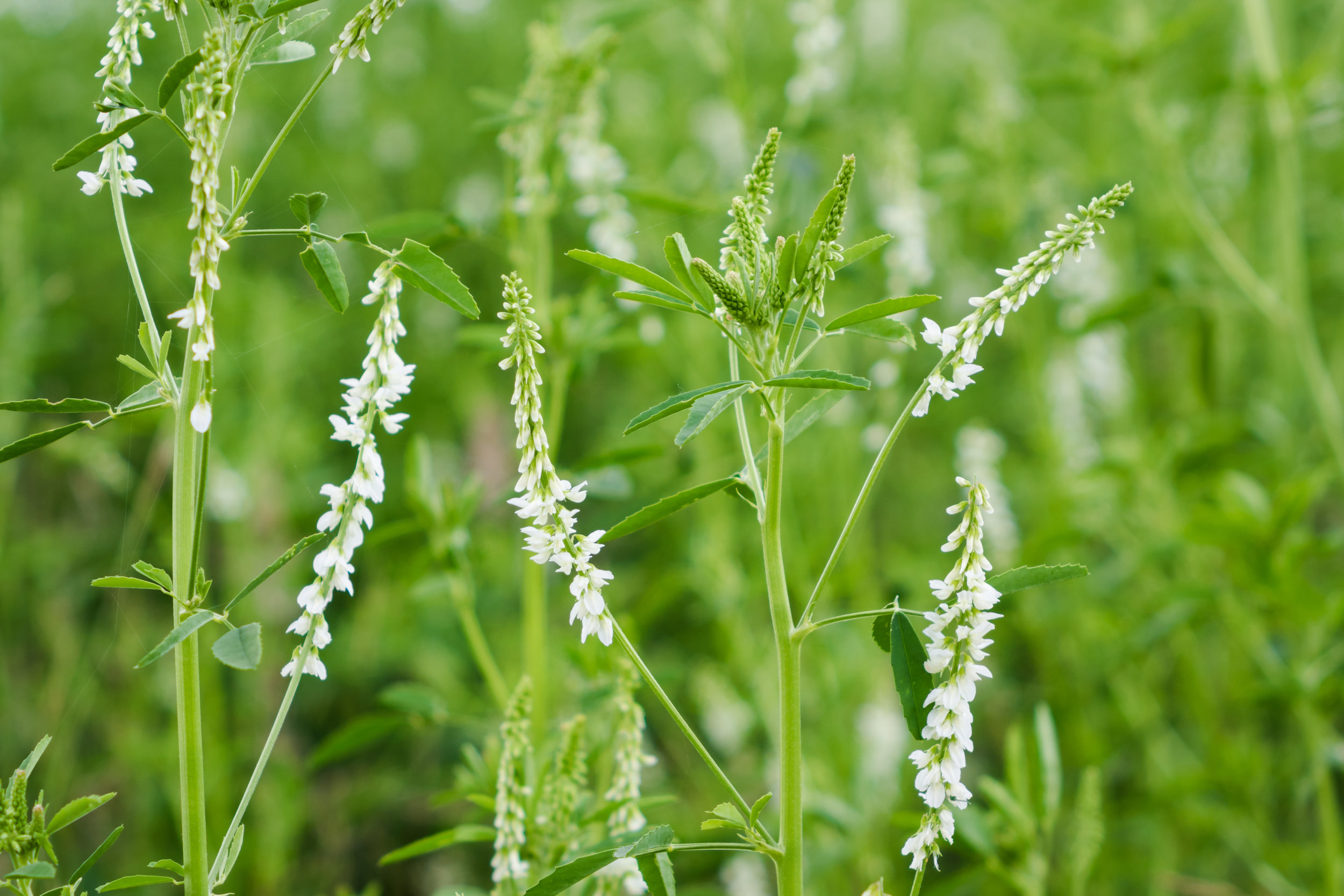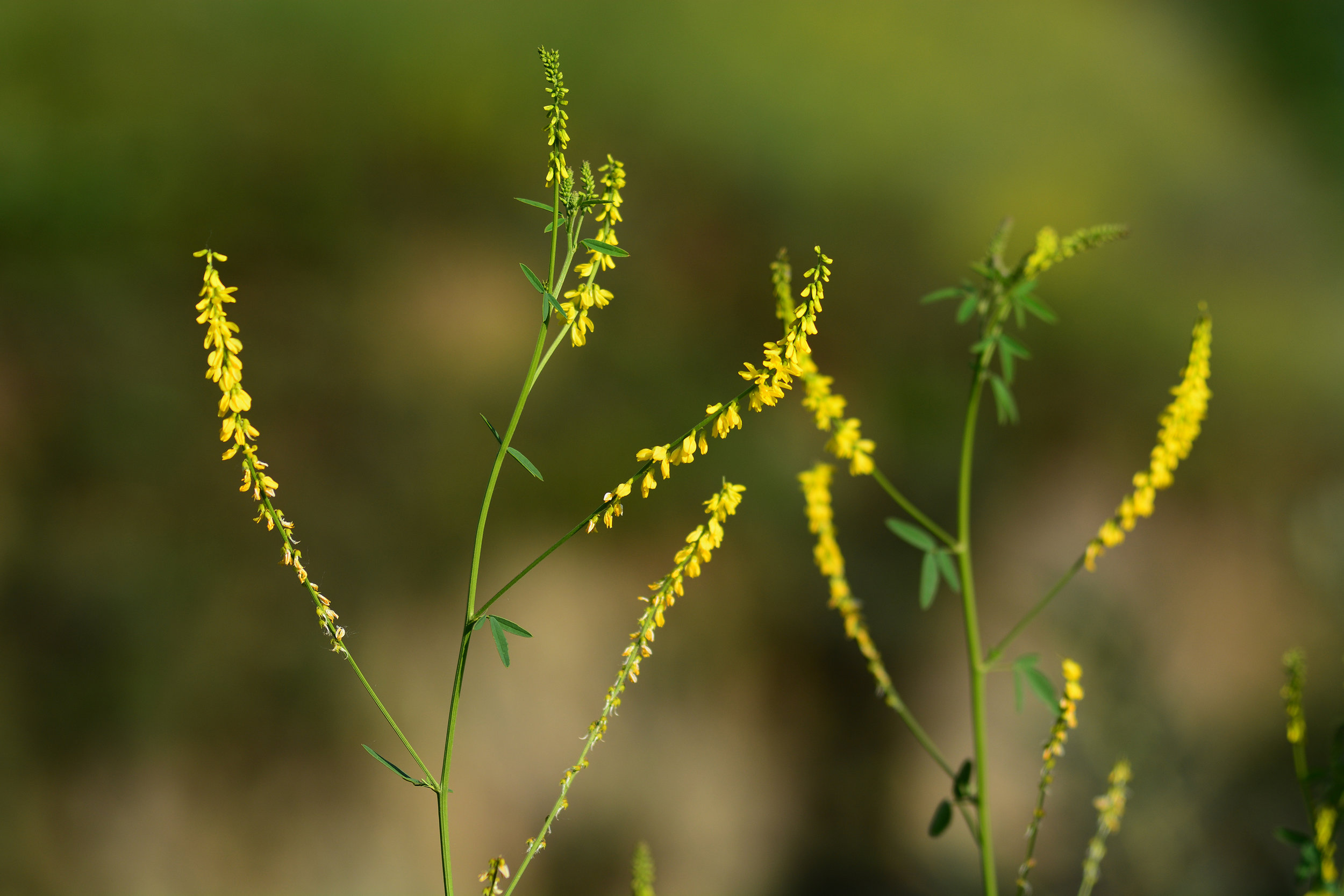Melilotus spp. (sweetclover)
Tall annual or biennial nitrogen-fixing legume with small white or yellow flowers. Traditionally thought to be two distinct species, but now often considered the same and readily hybridizing. Not true clovers (Trifolium spp.). Very drought, frost and cold tolerant. Adapted to all soil textures and moderate salinity; intolerant of acidic soils. Effective on clay pan, gravel, infertile and wet soils unsuitable for Alfalfa (Medicago sativa) and true clovers. Used for hay, silage, pasture and as a valuable honeybee plant, as well as for roadsides and mine reclamation. Establishes easily. Yellow-type blooms and matures earlier, is finer stemmed, shorter, more drought tolerant and persistent in pastures, and is much more commercially available. White-type is more productive, winter hardy and better for honey production. Either type may become weedy, invading nearby areas; cut or graze before seed-set where necessary.
DISTRIBUTION / ADAPTATION
INFORMATION & ATTRIBUTES
Family: Fabaceae
Duration: Annual/Biennial/Perennial
Growth Habit: Forb
Native Status: Introduced
Growth Form:
Mature Height: in.
Bloom Color:
Bloom Period:
Annual Precipitation: in.
Drought Tolerance:
Shade Tolerance:
Fire Resistance:
Fire Tolerance:
Nitrogen fixation:
Bloat:
SOIL ADAPTATION
Coarse Texture:
Medium Texture:
Fine Texture:
Salinity Tolerance:
CaCO3 Tolerance:
pH Range:
SEEDING NOTES
Seeds per Pound:
Seeding Rate: lbs/acre
Season:
Days to Germination:
VARIETIES
None



